Hometown, or Fragment of Northeast Sector
2021
CRT TV components, pakucho fibres, acrylic paint, found buttons
26.5cm x 10cm x 30cm
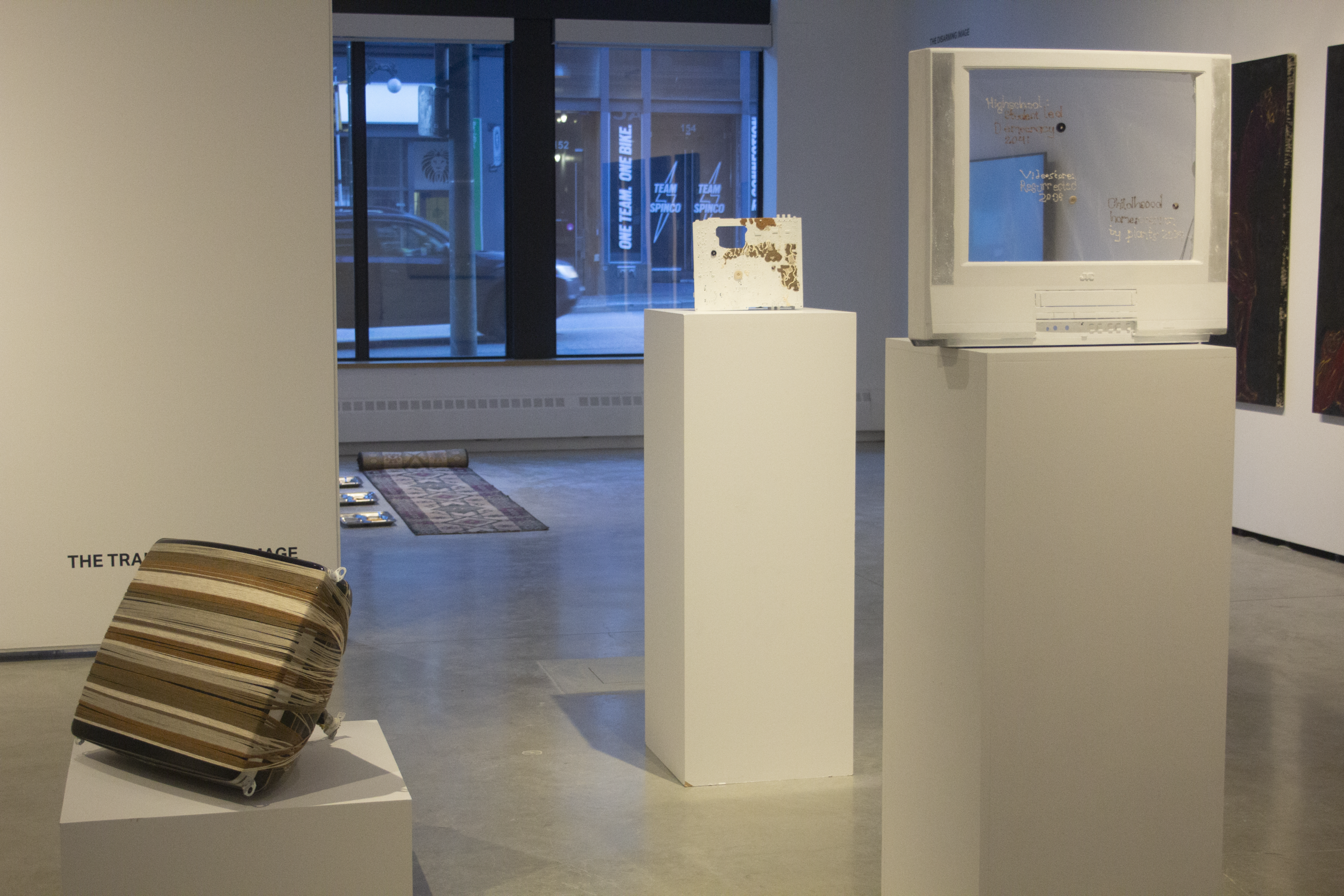
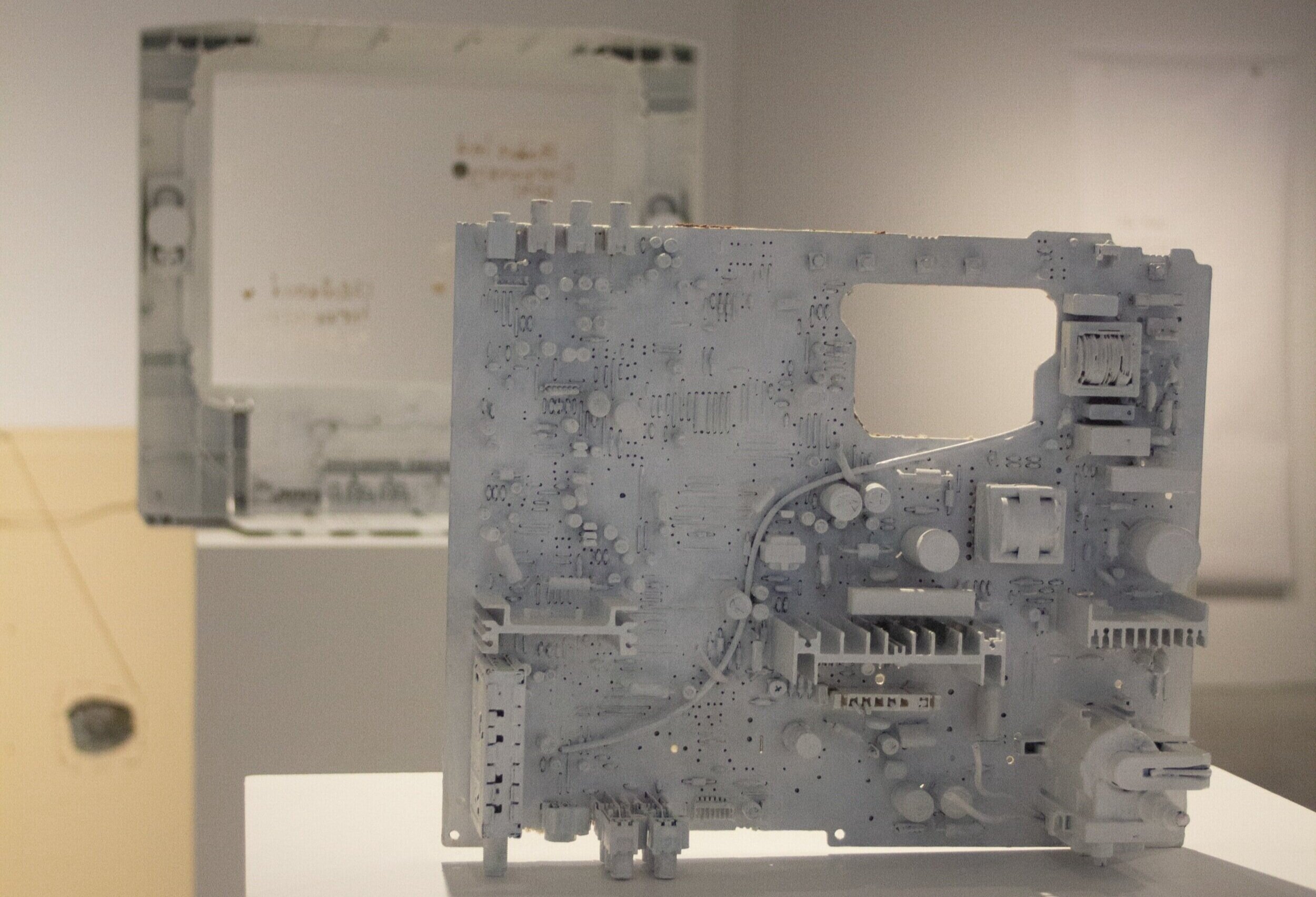
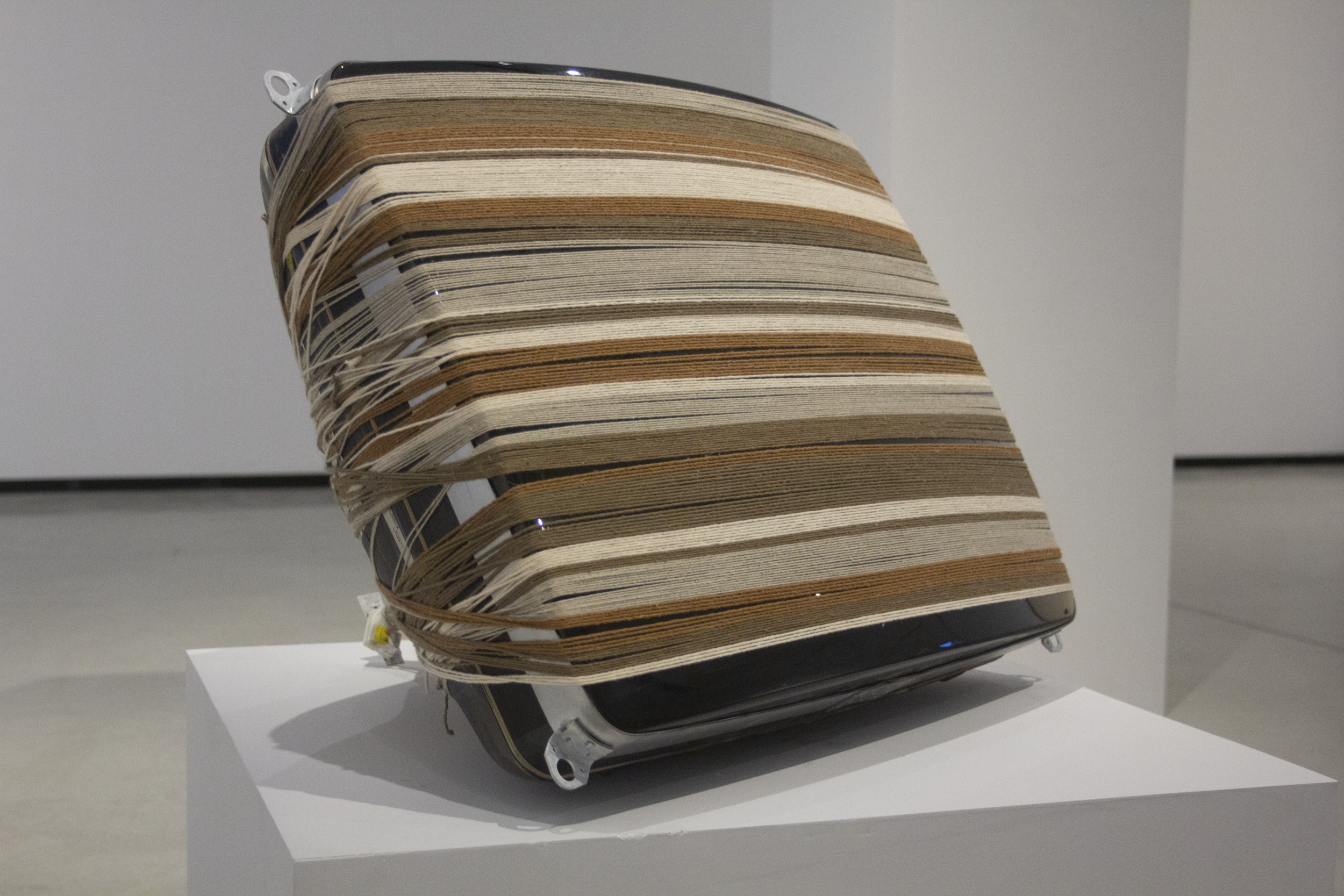
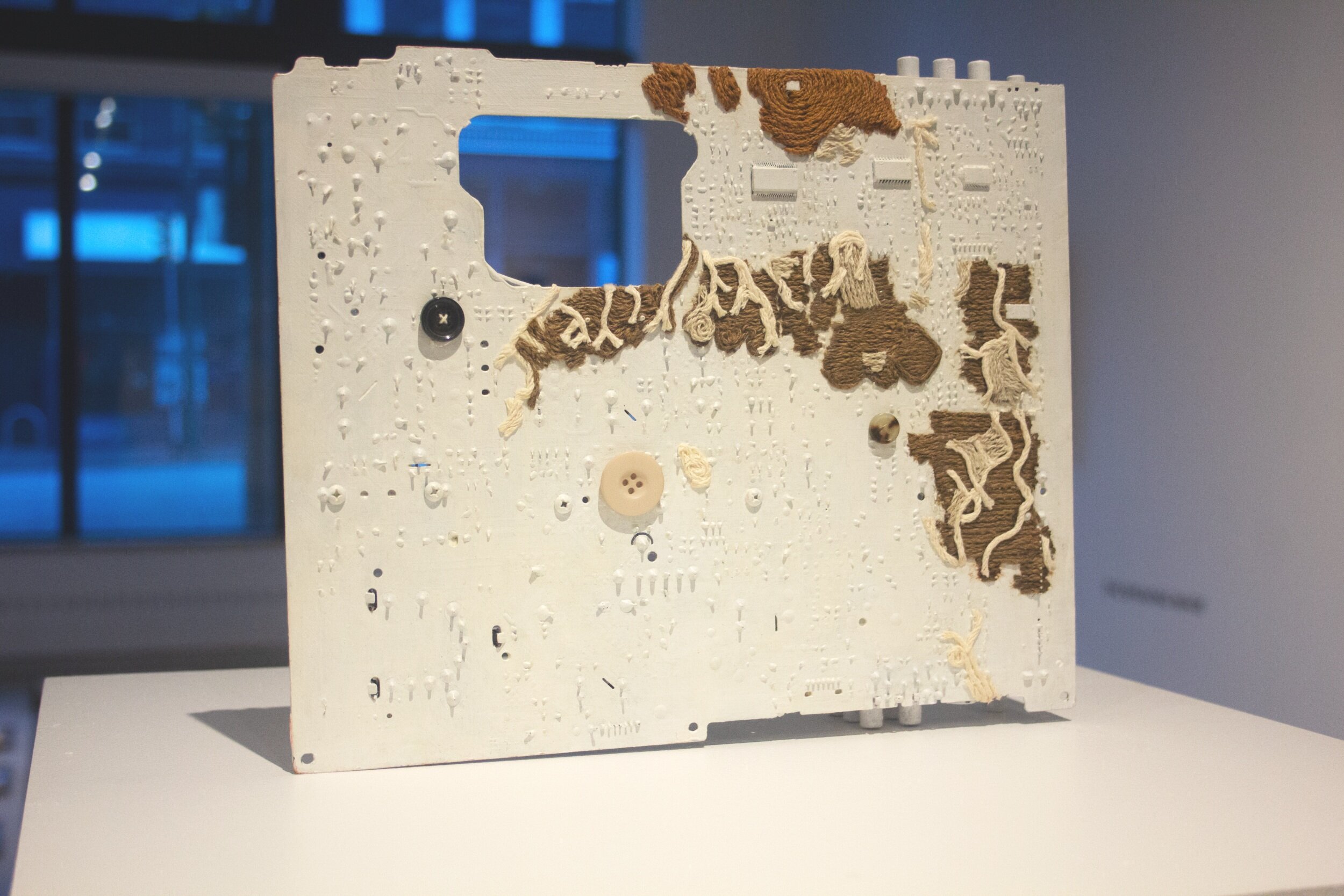
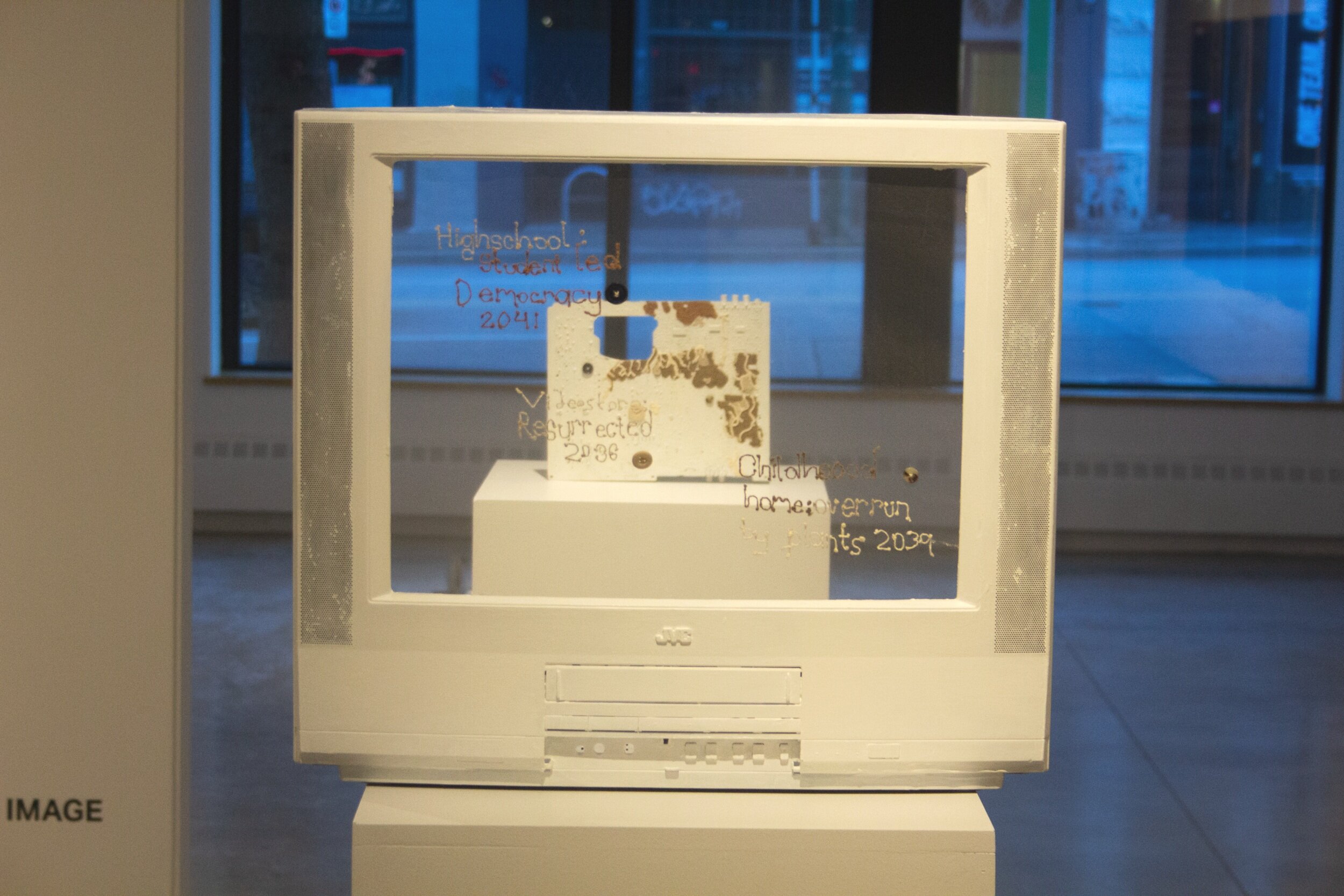
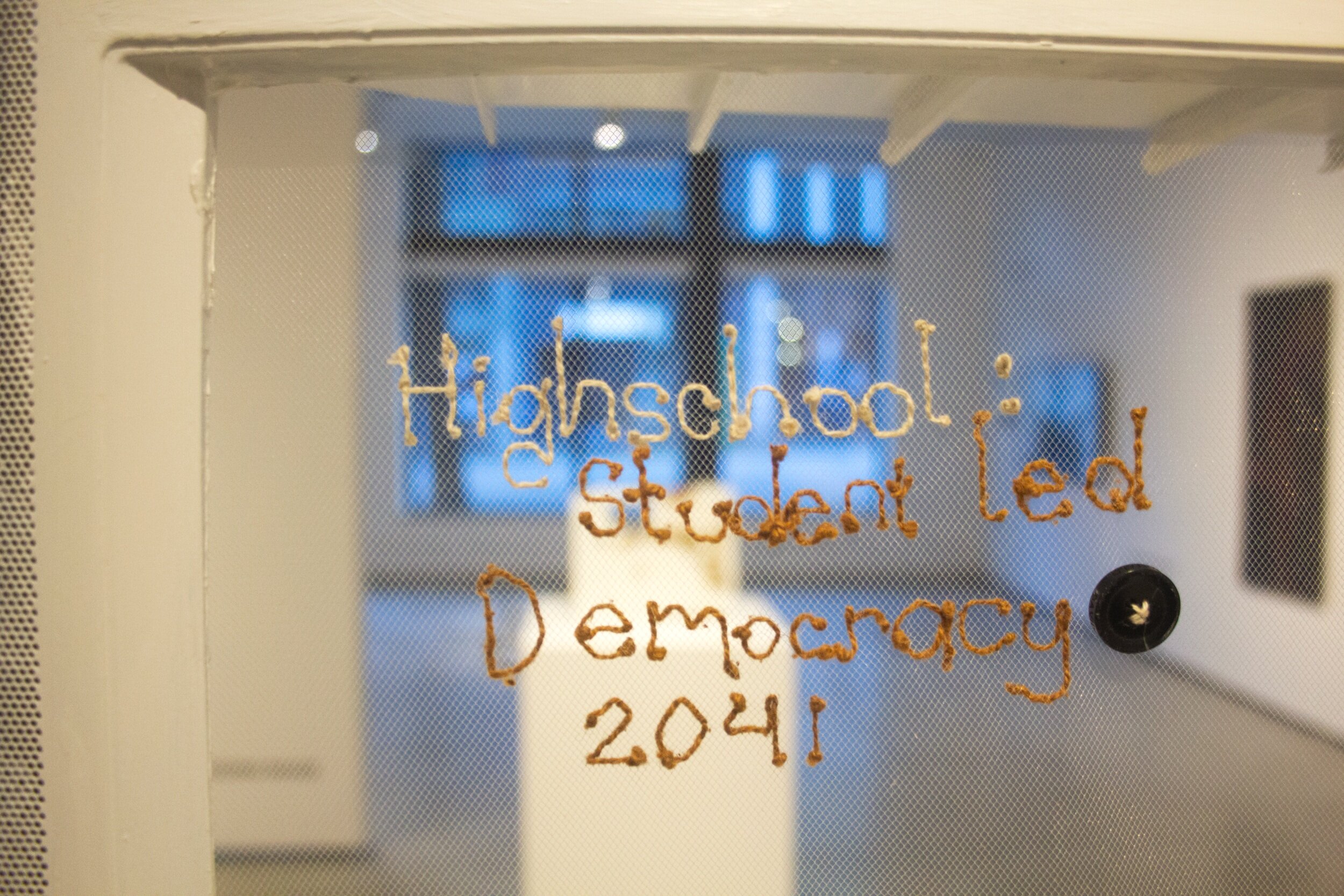

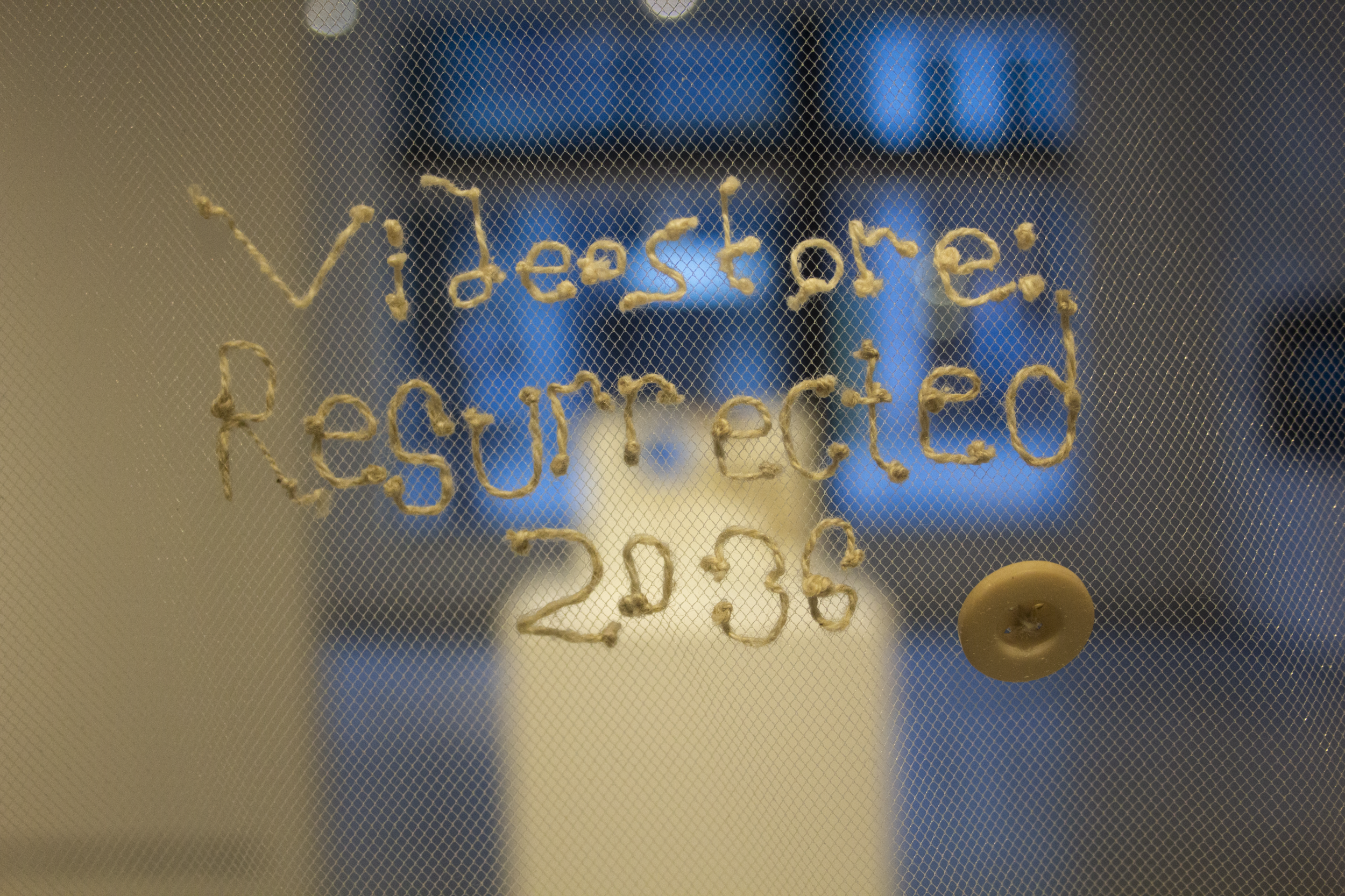
In the context of the climate crisis, Hometown, or Fragment of Northeast Sector contrasts the materials of a dismantled cathode-ray tube TV and sustainably produced pakucho fibres to examine the relationship between technology and ecology. It diverts the hazardous e-waste materials of the TV and transforms them into a sculptural piece, highlighting the ecological impact of these antiquated technologies while simultaneously proposing potential sustainable futures.
The motherboard of the TV is reconstructed into a map of the remaining sensitive ecosystems of my hometown of Coquitlam, BC. Using the Metro Vancouver Sensitive Ecosystem Inventory Mapping App, the colour of the pakucho fibre each correspond to a particular type of ecosystem, with buttons pointing to my childhood home, high school, and video rental store. The dismantled television frame then inscribes potential phantom settlements, which is a historical phenomenon where nonexistent towns were written into maps as copyright traps, but that often, through the act of naming, became inhabited realities. These hand-stitched phantom settlements call for the resurrection of my local video store by 2036, plants overtaking my childhood home by 2039, and my former high school becoming a student-run democracy by 2041. The frame urges its viewers to erect these potential ideas into existence. The final component of the dismantled TV is the tube itself, which is mummified by the pakucho yarn to try to contain its toxic chemical. Each of the three elements of this piece inhales the toxicity clogging our earth and attempt to reconstruct their materials into potential sustainable futures.
2021 “BFA Project 2021: Images that Take, Images that Give,” Audain Gallery, Vancouver, Canada
Click here to learn more about the exhibition Images that Take, Images that Give — which was curated and designed by myself, my classmates, our professor Sabine Bitter, visiting artist Heba Y. Amin, and MFA candidate Aakansha Ghosh.